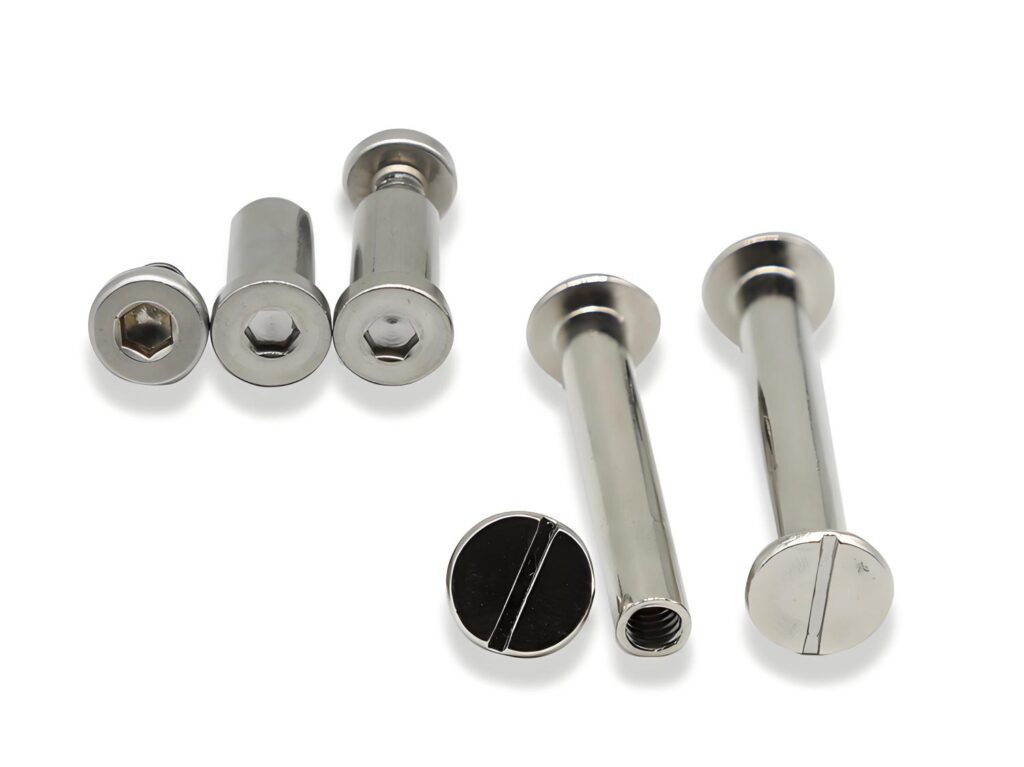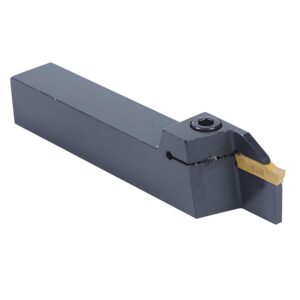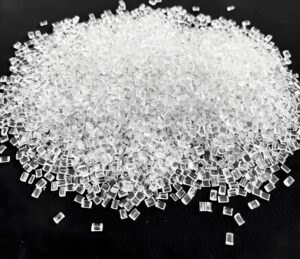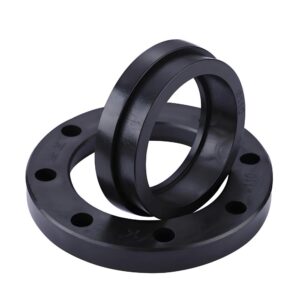Rivet is a cornerstone of the machining and manufacturing industries, serving as a reliable fastening solution for countless applications. These small but mighty components have been used for centuries, from constructing iconic structures like the Eiffel Tower to assembling modern aircraft. This blog delves into the world of rivets, exploring their definition, types, functionality, manufacturing, applications, and more, providing a comprehensive guide for professionals.
Rivet Definition
A rivet is a mechanical fastener used to join two or more materials by creating a permanent bond. Typically made of metal, a rivet consists of a cylindrical shaft with a head on one end. When installed, the tail end is deformed to secure the materials together, forming a strong, durable connection. Rivets are favored in industries like aerospace, automotive, and construction for their simplicity and strength, making them a go-to choice for applications where reliability is paramount.
Types of Rivets
Solid Rivets
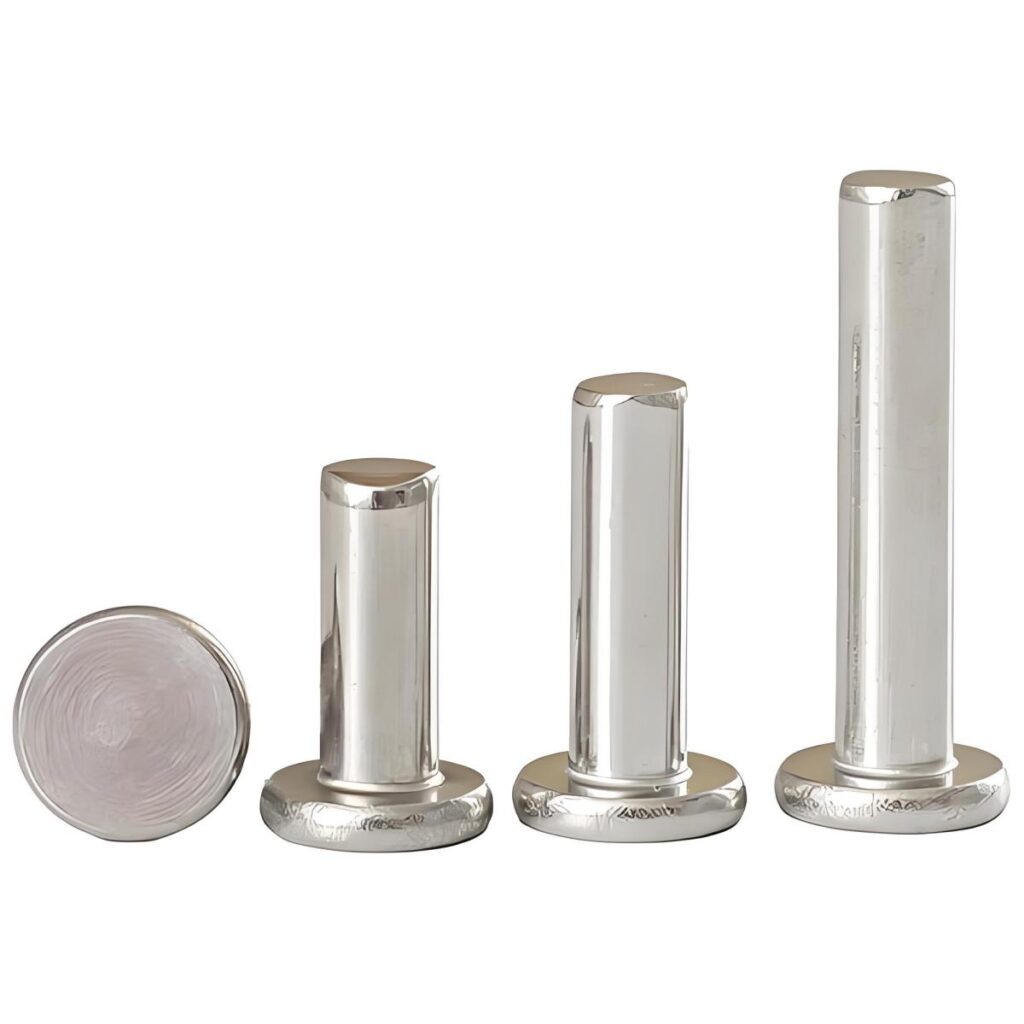
These traditional rivets, used for centuries, feature a solid shaft and a pre-formed head, offering unmatched strength. They are widely used in structural applications like bridges, skyscrapers, and aircraft frames, where high load-bearing capacity is essential. Installation requires access to both sides of the workpiece and involves deforming the tail with a hammer or press, making them ideal for heavy-duty, permanent joints.
Blind Rivets (Pop Rivets)
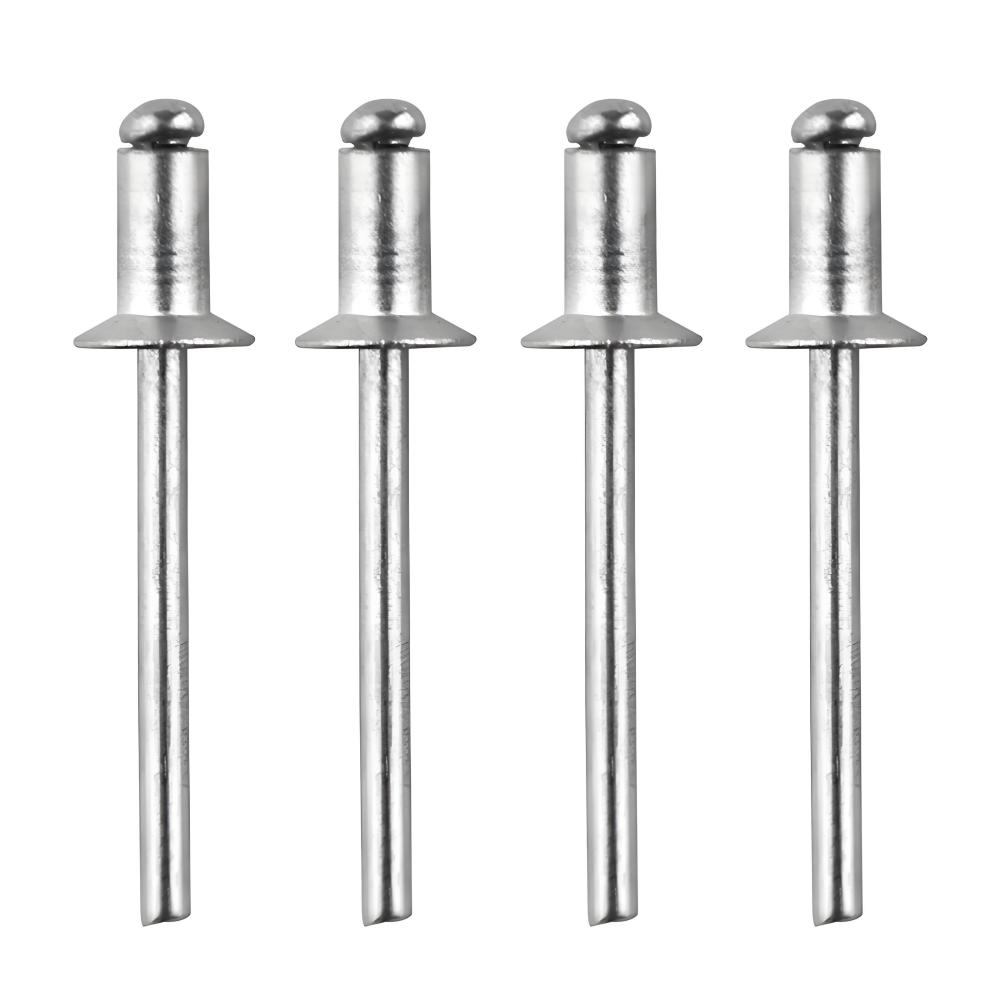
Designed for single-sided access, blind rivets, or pop rivets, are installed using a rivet gun that pulls a mandrel to deform the rivet. They are popular in sheet metal work, automotive repairs, and HVAC systems due to their ease of use and versatility. Available in materials like aluminum and steel, they suit both professional and DIY projects where quick, reliable fastening is needed.
Tubular Rivets
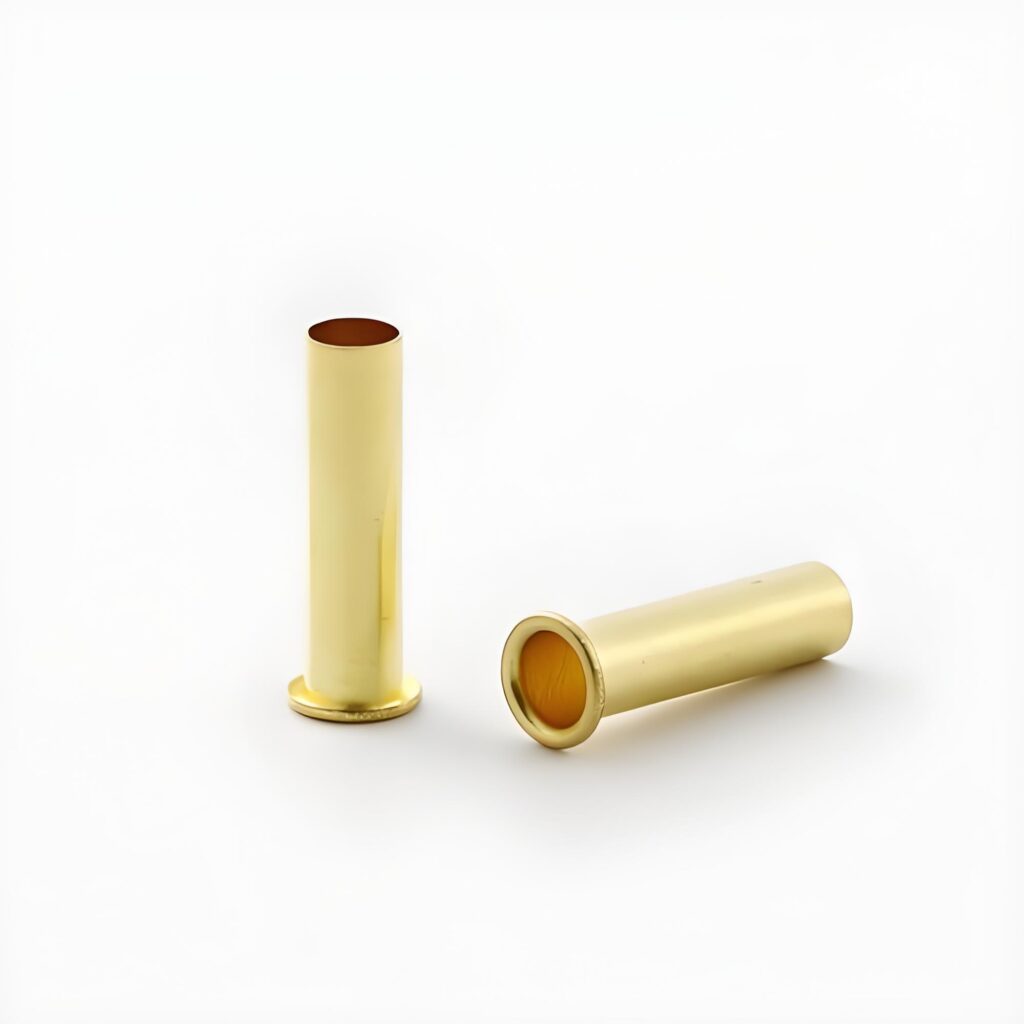
Featuring a partially hollow shaft, tubular rivets are lighter than solid rivets, making them suitable for applications like leatherwork, electronics, and light metal assemblies. The hollow design reduces installation force, allowing for efficient fastening in products like luggage, circuit boards, or decorative items where weight and aesthetics matter.
Semi-Tubular Rivets
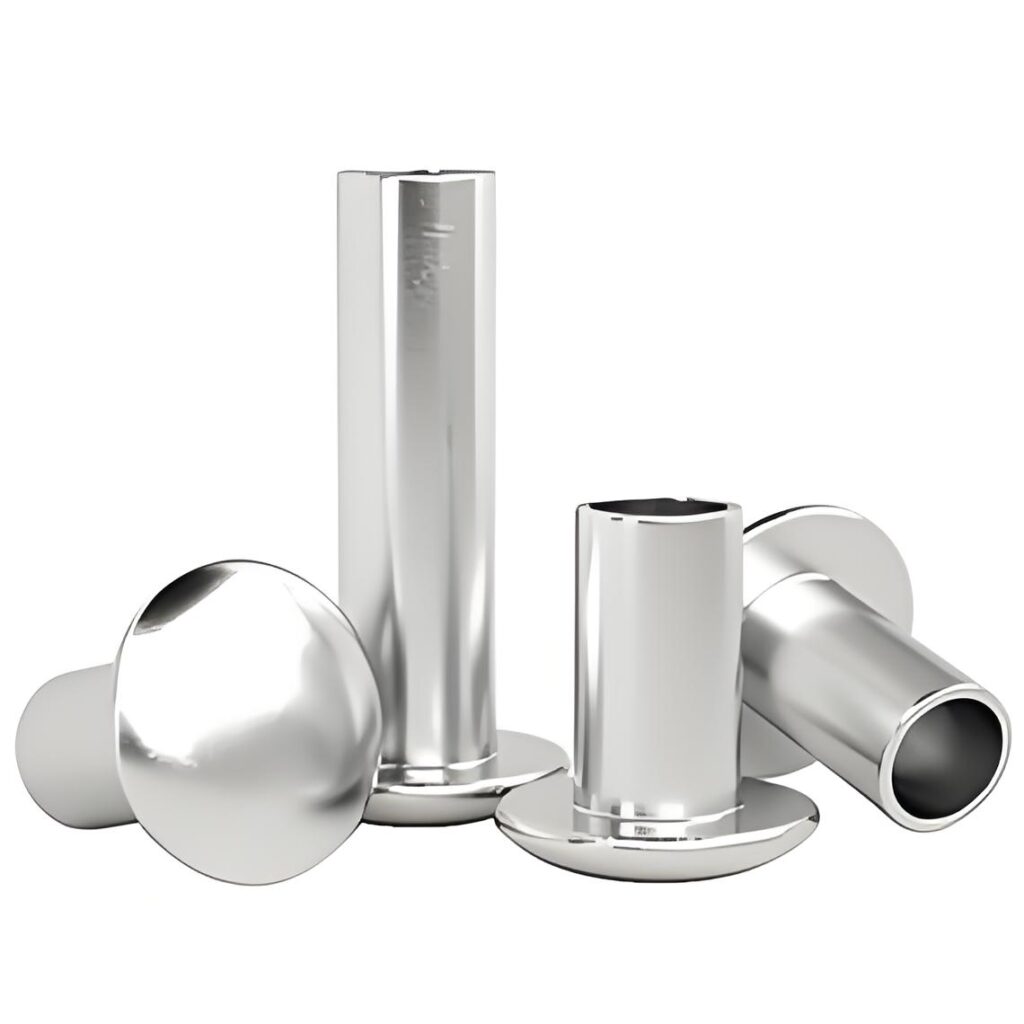
Similar to tubular rivets but with a shallower hollowed area, semi-tubular rivets balance strength and ease of installation. They require less force to set, making them ideal for high-speed assembly in automotive components like brake linings, clutches, and light metal frameworks, such as furniture or appliance parts.
Flush Rivets
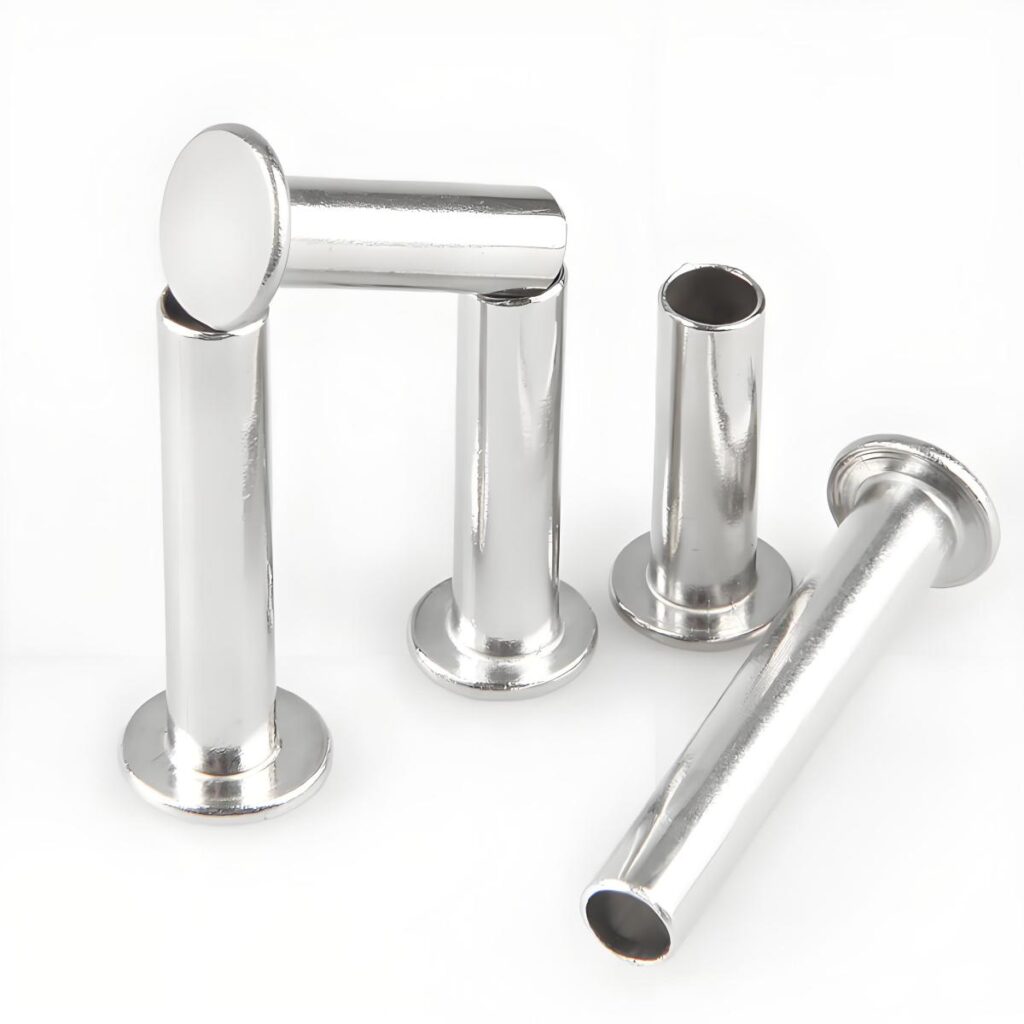
lush rivets have a countersunk head that sits flush with the material surface, providing a smooth finish. They are commonly used in aerospace for aircraft skins to reduce drag or in consumer products where aesthetics are critical. Their installation requires precise hole preparation to ensure a strong, seamless joint.
Drive Rivets
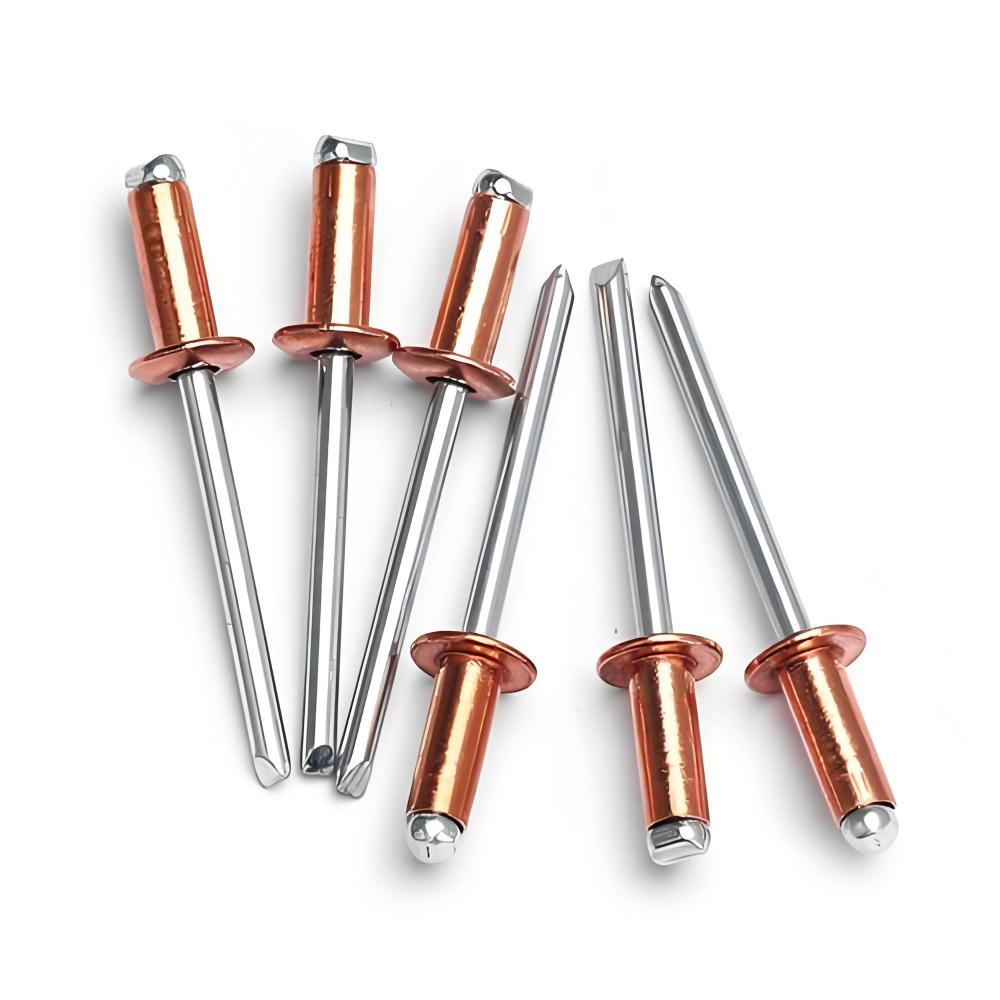
These rivets are installed by driving a pin into the hollow shaft, causing it to expand and secure the materials. Quick and simple to install with just a hammer, drive rivets are ideal for light-duty tasks like attaching metal panels or signage in construction and manufacturing settings.
Split Rivets
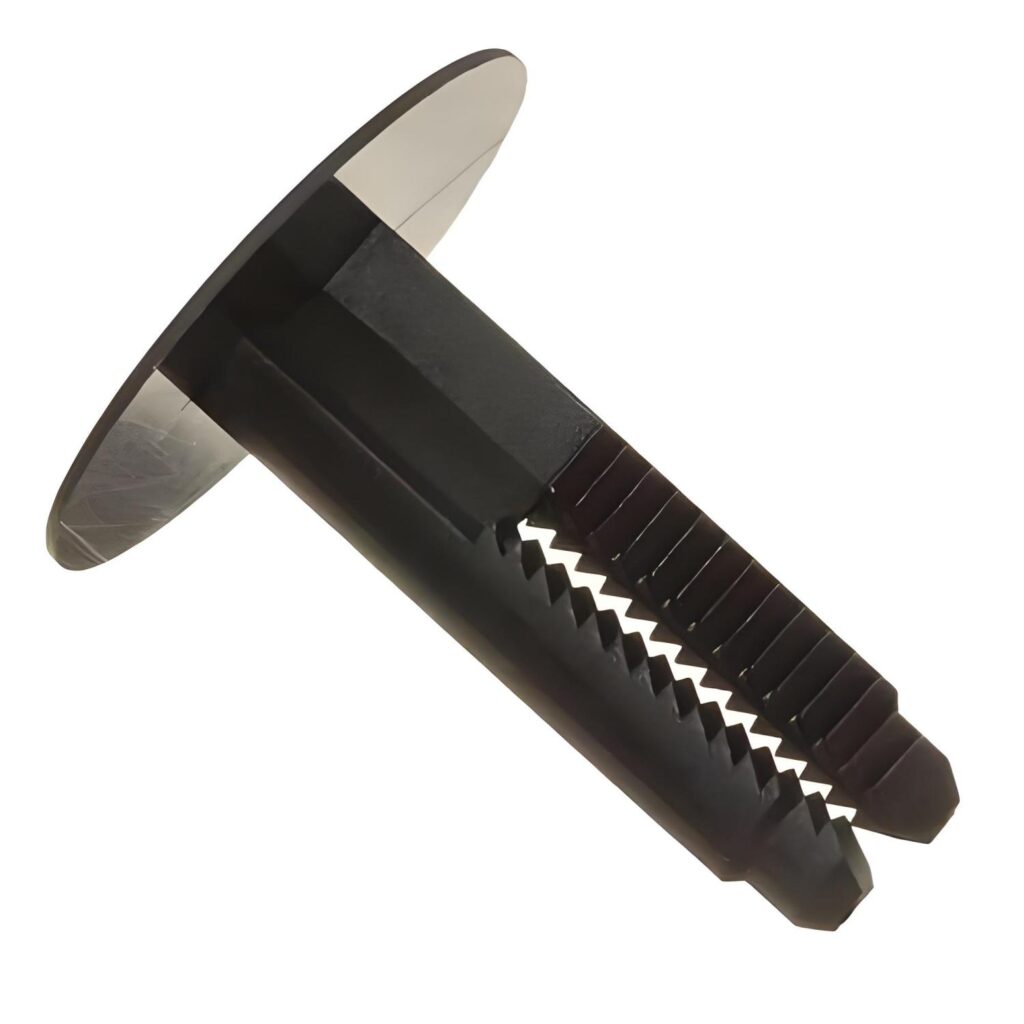
Designed for softer materials like wood, plastic, or leather, split rivets have a split shaft that splays out during installation to create a secure hold. They are commonly used in crafts, upholstery, or bookbinding, where their ability to grip softer materials without excessive force is valuable.
Self-Piercing Rivets
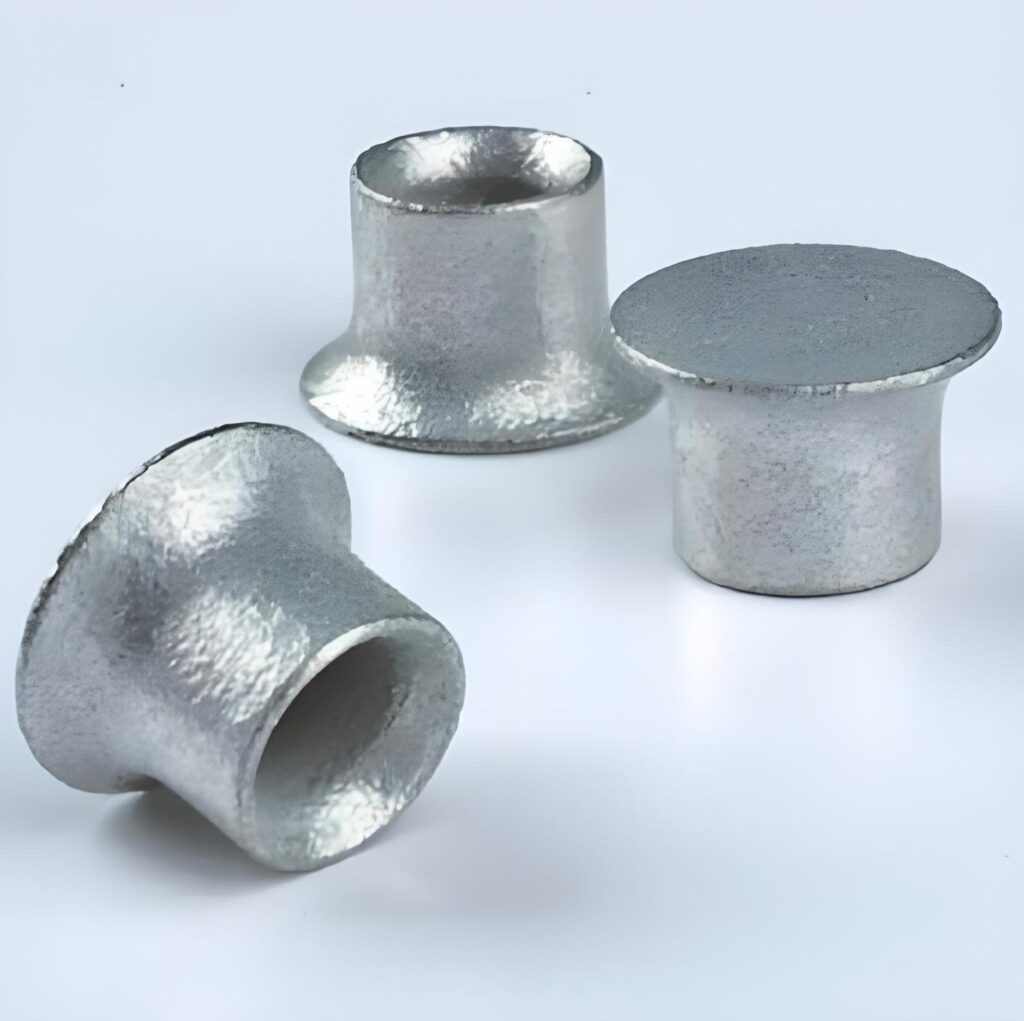
These innovative rivets pierce materials without pre-drilled holes, making them highly efficient for automated assembly lines, particularly in automotive manufacturing. They penetrate the top material and flare into the bottom layer, creating strong joints for sheet metal or dissimilar materials like steel and aluminum.
How Rivet Work
Rivets work by creating a permanent mechanical bond between two or more materials. The process begins with a pre-drilled hole (for most rivet types) through which the rivet is inserted. The head of the rivet rests against one side of the material, while the tail end protrudes through the other side. Using a tool like a rivet gun or hammer, the tail is deformed to create a second head, effectively clamping the materials together.
For blind rivets, the process is slightly different. A rivet gun pulls a mandrel through the rivet, causing the tail to expand and form a secure head. Once the mandrel snaps off, the rivet is set. This mechanism allows for quick and efficient installation, especially in tight spaces.
The strength of a rivet joint comes from the friction and mechanical locking created by the deformed rivet. This makes rivets particularly effective in applications subject to shear or tensile forces, ensuring a robust and long-lasting connection.
How Were Rivets Made?
Historically, rivets were handcrafted by skilled blacksmiths who forged metal rods into the desired shape. The process was labor-intensive, requiring precision to ensure consistent size and strength. In the Industrial Revolution, advancements in manufacturing led to the mass production of rivets using machines, significantly reducing costs and increasing availability.
Today, rivets are made through a combination of automated processes. High-quality metals like steel, aluminum, or copper are cut into rods, which are then shaped into rivets using cold-forming or hot-forming techniques. The heads are formed through pressing or stamping, and the rivets are often heat-treated to enhance strength. Modern manufacturing ensures tight tolerances, making rivets reliable for even the most demanding applications.
What Are Rivets Used For?
Rivets are incredibly versatile and used across a wide range of industries. Their ability to create strong, permanent joints makes them indispensable in applications where reliability is critical. Some common uses include:
- Aerospace: Rivets, especially flush rivets, are used to assemble aircraft fuselages, wings, and other components, where lightweight yet strong fasteners are essential for aerodynamic performance.
- Construction: In bridges, skyscrapers, and other structures, rivets provide durable connections that withstand environmental stresses.
- Automotive: Rivets, including semi-tubular rivets, are used in car frames, panels, and brake assemblies, offering a secure fastening method that resists vibration.
- Electronics: Tubular and small rivets are used to assemble electronic devices, ensuring compact and reliable connections.
- Marine: Rivets are employed in shipbuilding to join metal plates, providing watertight seals that endure harsh marine conditions.
From heavy-duty industrial applications to delicate craftsmanship, rivets are a universal solution for joining materials securely.
Advantages and Disadvantages of Rivets
Like any fastening method, rivets come with their own set of strengths and limitations. Understanding these can help machinists and engineers make informed decisions.
Advantages
- Durability: Rivet joints are highly resistant to vibration and fatigue, making them ideal for high-stress environments.
- Permanent Bonding: Once installed, rivets create a fixed joint that doesn’t loosen over time, unlike screws or bolts.
- Versatility: Rivets can join a variety of materials, including metals, plastics, and composites.
- Cost-Effective: Rivets are relatively inexpensive and easy to install, especially with automated tools.
- Lightweight: Many rivet types, such as aluminum blind rivets, are lightweight, making them suitable for aerospace and automotive applications.
Disadvantages
- Permanent Nature: Rivets are difficult to remove without damaging the materials, making them less ideal for applications requiring disassembly.
- Installation Complexity: Some rivets, like solid rivets, require access to both sides of the workpiece and specialized tools.
- Limited Load Capacity: While strong, rivets may not match the load-bearing capacity of welded joints in some cases.
- Aesthetic Concerns: The visible heads of some rivets may not be suitable for applications where a smooth surface is desired, though flush rivets address this issue.
By weighing these pros and cons, professionals can determine whether rivets are the right choice for their project.
How to Use a Rivet Gun
A rivet gun is a critical tool for installing blind rivets, offering efficiency and ease of use. Here’s a step-by-step guide to using a rivet gun effectively:
- Select the Right Rivet: Choose a rivet that matches the material thickness and load requirements. Ensure the rivet’s grip range is appropriate for the workpiece.
- Drill a Hole: If necessary, drill a hole through the materials to be joined. The hole should match the diameter of the rivet.
- Load the Rivet: Insert the rivet into the nose of the rivet gun, ensuring the mandrel is securely held by the tool.
- Position the Rivet: Place the rivet through the pre-drilled hole, with the head flush against the material surface.
- Pull the Trigger: Squeeze the rivet gun’s trigger to pull the mandrel, causing the rivet to deform and form a second head. Continue until the mandrel snaps off.
- Inspect the Joint: Ensure the rivet is securely set and the materials are tightly joined.
Using a rivet gun requires practice, but with the right technique, it’s a straightforward process that delivers reliable results.
Choosing the Right Rivet for Your Project
Selecting the right rivet involves considering several factors:
- Material Compatibility: Ensure the rivet material won’t cause galvanic corrosion when paired with the workpiece.
- Load Requirements: Determine whether the joint will face shear, tensile, or combined forces, and choose a rivet type accordingly.
- Accessibility: If only one side of the workpiece is accessible, blind rivets are the best choice.
- Aesthetics: For visible joints, flush rivets provide a smooth surface, while other types may leave visible heads.
- Environmental Conditions: In corrosive environments, like marine applications, choose rivets with high corrosion resistance, such as stainless steel.
By carefully evaluating these factors, machinists can ensure their rivet joints are both functional and durable.
Why Choose Precionn for Your Machining Needs?
At Precionn, precision is in our name—and in our work. As a company rooted in the machining industry, we understand the value of quality fastening solutions like rivets. Whether your project requires custom metal parts, prototyping, or small-batch production, our team is committed to delivering high-precision components with tight tolerances and fast turnaround.
We support clients in aerospace, automotive, electronics, and manufacturing industries, ensuring every detail—from rivet-ready holes to final surface finish—is handled with expert care.
When you choose Precionn, you’re not just getting a part—you’re getting a partner. Let us help you build with confidence, one fastener at a time.

